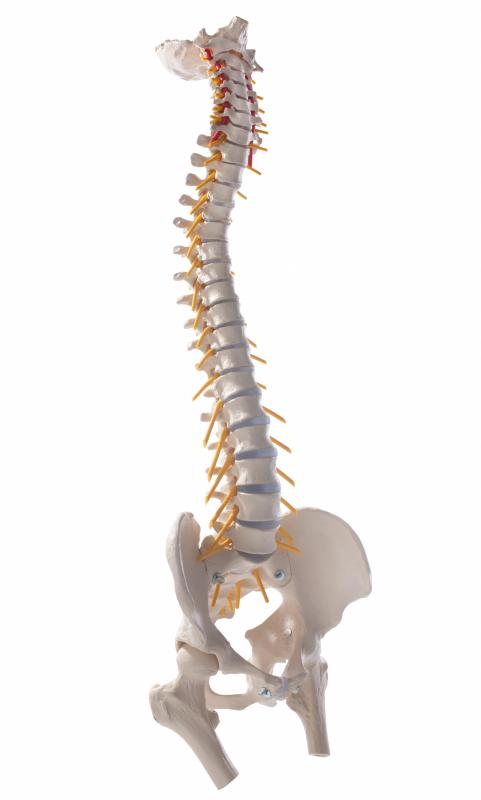At TheHealthBoard, we're committed to delivering accurate, trustworthy information. Our expert-authored content is rigorously fact-checked and sourced from credible authorities. Discover how we uphold the highest standards in providing you with reliable knowledge.
What is a Ruptured Disc?
A ruptured disc, also called a herniated disc or a slipped disc, is when one of the discs that sit between the vertebrae of the spine bulges or rips. These discs consist of a shell-like capsule that encloses a jelly-like substance known as the nucleus. They act to cushion and absorb shock to the spine and are more prone to disease and injury with age. Herniated discs can occur anywhere in the spine, but they are most frequently found in the lumbar, or lower back, region of the spine.
A ruptured disc is most common in people over thirty years old because, after this point, spinal discs begin to lose their fluid as part of the natural aging process. This makes them more susceptible to injury. An injury can be caused by a sudden, acute strain on the back, a severe twisting movement, or consistent movements and lifting that puts chronic strain on the lower back. This makes professional drivers and manual laborers especially prone toward herniated discs.

A doctor will usually diagnose a ruptured disc by asking questions about the patient’s medical history and symptoms and conducting a physical exam. Sometimes a doctor may do a magnetic response imaging (MRI) scan or a computed tomography (CT) scan to determine the exact location and severity of the ruptured disc and to rule out other ailments. If there is suspicion of another condition, such as a tumor, doctors may also perform X-rays, blood tests, and other tests to explore this possibility. Herniated discs usually heal on their own and only require surgery in a small number of severe cases. Doctors usually prescribe medication to decrease pain and swelling, light activity to build muscles that support the back and help prevent further injury.

The symptoms of a ruptured disc may range from severe pain to no pain at all depending on the location. If the herniated disc does not press on a nerve, it may not create any pain, but if the disc does put pressure on a nerve, it can result in numbness or pain. If the slipped disc is in the neck, pain or numbness may be felt in the shoulders, chest, or arms. In the lower back, it may cause pain, numbness, and/or tingling from the buttock, down the leg, and into the ankle and foot. In this case, back pain may also be experienced, though not as severely as in the leg.

In a severe case called cauda equina syndrome, there may be muscle aching and loss of bowel control. Cauda equina syndrome occurs when the cauda equina, the mass of nerves below the spinal cord, is disturbed or disabled. This may have several causes, one of which is pressure from a ruptured disc in the lumbar spine. Cauda equine syndrome occurs in only one to fifteen percent of herniated disc patients and usually requires surgical decompression. If the onset of the syndrome is very sudden and acute, it is considered a medical emergency and doctors will often perform a surgical decompression within forty-eight hours to prevent permanent neurological damage.
AS FEATURED ON:
AS FEATURED ON:













Discuss this Article
Post your comments